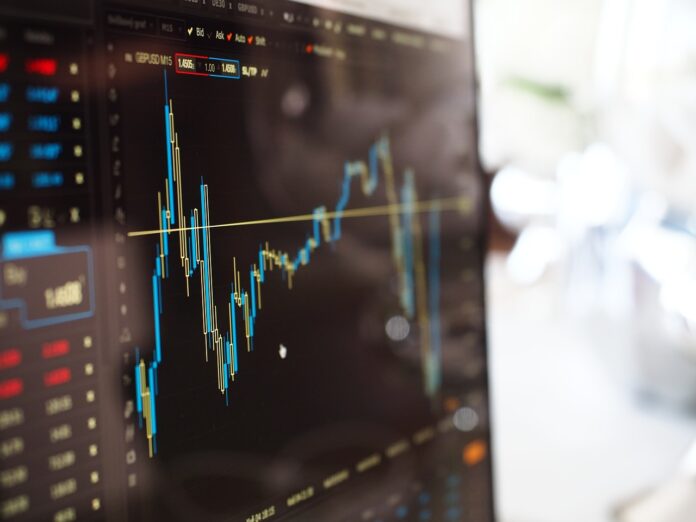In a seismic shift for global markets, President Trump announced a significant tariff increase on April 2, 2025, elevating the effective U.S. tariff rate by approximately 25% to an average of 27% on imports. This move, detailed in a recent J.P. Morgan Private Bank Asia report, marks the highest tariff rate in over a century, sending shockwaves through financial markets and prompting a reevaluation of investment strategies worldwide.
The Tariff Hike: A Game-Changer for Global Trade
The tariff escalation, dubbed “Liberation Day” by some analysts, aims to achieve what J.P. Morgan identifies as the “three R’s”—revenue generation, restriction of imports, and reciprocity in trade relationships. Unlike previous tariff policies that were often seen as negotiation tactics, this administration appears committed to fundamentally reshaping the U.S. trade landscape. Trade with Canada and Mexico is temporarily excluded under the USMCA framework, though non-compliant goods still face a 25% tariff. Critical sectors like semiconductors, pharmaceuticals, and gold remain untouched for now but are under separate investigations, adding to the uncertainty.
The immediate market reaction was stark: U.S. stock index futures plummeted over 3%, equities saw sharp declines, bonds rallied, commodities weakened, and the U.S. dollar strengthened against growth-oriented currencies like the Chinese yuan. This policy shift signals a structural change in the global economy, with the U.S. stepping back from its historical role as the “last consumer” absorbing global trade surpluses. Export-dependent economies now face the challenge of finding new growth avenues, while the U.S. braces for heightened economic risks.
Financial Markets in Flux: Risks and Opportunities
The tariff hike introduces significant uncertainty into financial markets, with volatility expected to persist as negotiations and policy shifts unfold. J.P. Morgan advises investors to adopt a cautious approach, emphasising the importance of diversification across geographies and asset classes to mitigate risks. The report highlights several key considerations for investors:
- Equities and Risk Assets: The heightened policy uncertainty has led to a risk-off sentiment, with U.S. equities particularly vulnerable. J.P. Morgan notes a slight downgrade in optimism for U.S. risk assets, recommending a focus on portfolio resilience through income-generating assets like bonds.
- Bonds and Safe Havens: Bonds are positioned as a stabilising force, offering income and protection during growth shocks. Gold, despite its volatility, retains its status as a safe haven, providing a hedge against market turmoil.
- Alternatives for Stability: Investments in alternatives such as hedge funds and infrastructure, which are less correlated with traditional stocks and bonds, are recommended as effective stabilisers in this uncertain environment.
- Emerging Markets Challenges: Emerging markets face amplified risks due to increased volatility, currency fluctuations, and political instability. Investors are cautioned to thoroughly assess these risks, as changes in exchange rates and differing accounting practices outside the U.S. can significantly impact returns.
Strategic Implications for Investors
The duration of these tariffs and the potential for retaliation from other countries remain critical unknowns. J.P. Morgan underscores that the Trump administration’s tolerance for economic and market pain will largely determine how long these measures persist. While some tariff increases may be negotiated away, the overarching goal of rewiring U.S. trade relationships suggests a longer-term shift.
For investors, this environment demands a proactive approach. J.P. Morgan advocates for capturing tactical opportunities amid elevated volatility, potentially through structured products, while maintaining a diversified portfolio to weather potential downturns. The report also warns of the heightened risks in alternative investments, noting that they may involve greater volatility and are suitable primarily for sophisticated investors who can consult with tax advisors to navigate their complexities.
A Broader Perspective on Global Finance
The tariff surge underscores a broader tension in global finance: the balance between protectionism and globalisation
While the U.S. aims to bolster domestic industries, the ripple effects on global supply chains and trade dynamics could lead to inflationary pressures and slower growth in export-reliant economies. This shift challenges the resilience of financial systems worldwide, particularly in emerging markets where volatility is already a concern.
Moreover, the policy’s focus on revenue generation through tariffs could strain U.S. fiscal dynamics, potentially exacerbating budget deficits if paired with other expansionary measures like tax cuts. For beginner traders, this creates a complex landscape where understanding market reactions becomes crucial. The interplay between tariffs, inflation, and monetary policy responses—such as potential Federal Reserve rate adjustments—will shape market trajectories in the coming months, offering both risks and opportunities for those new to trading.
Trading for beginners in the current climate poses a steep challenge—but also a valuable opportunity to build essential skills. Here are some beginner-friendly strategies inspired by insights from J.P. Morgan.. Start with Safe Havens: As a new trader, focus on assets like bonds or gold, which J.P. Morgan highlights as stabilisers during market shocks. These can protect your portfolio while you learn to navigate volatility. For example, consider investing in U.S. Treasury bonds, which offer steady income and safety amidst equity declines.
- Diversify Early: Diversification is key to managing risk. Instead of putting all your money into one stock, spread your investments across different sectors or asset classes. J.P. Morgan’s emphasis on geographical and asset class diversification can help beginners avoid major losses—for instance, balancing U.S. stocks with international bonds.
- Avoid High-Risk Emerging Markets: J.P. Morgan warns of the volatility in emerging markets due to currency fluctuations and political risks. As a beginner, steer clear of these until you’re more experienced. Stick to more stable markets like the U.S. or developed economies where risks are better understood.
- Watch for Tactical Opportunities: Volatility can create short-term trading opportunities. For example, the report notes that U.S. stock index futures dropped over 3% after the tariff announcement. Beginners can practice identifying such dips to buy low and sell high, but start with small trades to limit risk.
- Learn from Market Reactions: Use this period to observe how markets respond to policy changes. Notice how the U.S. dollar strengthened against currencies like the Chinese yuan—this could guide you in forex trading. Start with a demo account to practice without risking real money.
By focusing on these strategies, beginner traders can build confidence and resilience in a turbulent market. The tariff-driven volatility may be daunting, but it also offers a real-world classroom for learning the ropes of trading.
Understanding the Real Risks of Losing Money in Trading
Trading financial assets, whether traditional stocks or cryptocurrencies, inherently involves the risk of financial loss. Markets are influenced by a wide range of factors—macroeconomic trends, geopolitical events, investor sentiment, and technological developments—which can cause prices to fluctuate unpredictably. Even experienced traders using sophisticated tools and strategies are not immune to losses, as no method guarantees success. Volatility, especially in the cryptocurrency market, can lead to sudden and significant shifts in asset value, making timing and decision-making particularly challenging. Additionally, emotional trading, lack of proper risk management, and overleveraging are common pitfalls that can quickly erode capital. It’s crucial to understand that past performance is not indicative of future results, and speculative assets should only represent a portion of a diversified portfolio. Investors should assess their own risk tolerance and financial situation before engaging in trading activities. Educational resources, demo accounts, and professional advice can help mitigate some of these risks, but they cannot eliminate them entirely. Ultimately, anyone entering the market must do so with the awareness that losses are a real and possible outcome of every trade.







